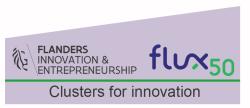Study Hydrogen Import coalition confirms: Shipping wind and solar to Europe is feasible from 2030!
In order to meet the challenge of the transition to a carbon-neutral society by 2050, we need to look beyond our own production of renewable energy generated domestically or offshore. The import of renewable energy plays an essential role in this respect. The study published today by the hydrogen import coalition – a collaboration between DEME, ENGIE, Exmar, Fluxys, Port of Antwerp, Port of Zeebrugge and WaterstofNet – concludes that this is both technically and economically feasible. The thorough feasibility study is the first tangible result of the collaboration between the companies involved, each with its own specific and complementary expertise and experience.
Within the 'hydrogen import coalition' WaterstofNet has contributed to the analysis of the use cases: where can the hydrogen be used and which are the most promising applications for the various hydrogen carriers?
The study provides the basis for concrete next steps, including pilot projects for the supply of sustainable energy by means of green molecules from countries where wind and solar are available in abundance to Belgian end users, among others.
Essential role in energy transition
The climate objective to reduce CO2 emissions in Belgium by 80% by 2050 compared to 2005 levels is a major challenge and requires a large-scale switch from fossil fuels to renewable energy. Where do we get our renewable energy from? How do we get green energy in the most affordable and reliable way, when and where we need it? It is clear that solar and wind will be the renewable energy sources of the future. However, in Belgium and Western Europe, there is not enough wind or solar energy, while other regions in the world in fact have solar and wind energy in abundance. In order to achieve a reliable, affordable and sustainable energy system, local production of solar and wind energy will therefore have to be supplemented by the supply of some of the necessary renewable energy from abroad. Molecules can act as energy carriers to efficiently transport green energy through pipelines and ships. Hydrogen, as a carrier of renewable energy, plays an important role in the blend of end-user solutions.

Feasible and cost-effective
Over a year ago, seven major industrial players and public stakeholders joined forces and expertise to jointly analyse the opportunities for importing green hydrogen into Belgium. The coalition, consisting of DEME, ENGIE, Exmar, Fluxys, Port of Antwerp, Port of Zeebrugge and WaterstofNet, has now completed a large-scale industrial study mapping out the financial, technical and regulatory aspects of the entire hydrogen import chain – from production abroad to delivery via ships and pipelines to Belgium and internal distribution – and providing a basis for the further roll-out to industrial applications.
After thorough analysis of all the elements, the study concludes that importing this form of renewable energy is a necessary and feasible solution to the growing shortage in Western Europe. Various types of hydrogen-derived carriers from a range of supply regions will be able to provide cost-competitive renewable energy and raw materials by 2030-2035. The most promising green energy carriers are ammonia, methanol and synthetic methane. These can be deployed through existing modes of transport – such as pipelines and maritime transport in particular – and growing markets, encouraging a rapid start.
According to the study, this import of renewable energy through green hydrogen carriers will therefore become an essential part of our energy supply, complementing the sustainable transition based on domestically generated energy. Belgium has maritime ports and extensive pipeline infrastructure, is linked to the major industrial clusters and has the capacity to meet its own energy needs and those of surrounding countries.
Concrete next steps
Now that the feasibility study has been completed, the coalition partners want to take some concrete next steps. We will analyse how to prepare our seaports to receive the hydrogen carriers of the future, seeking maximum synergy to serve our national interests. Specific pilot projects are being set up whereby we can make maximum use of the Flemish expertise and strength in the area of logistics, industry and technology for the development of a sustainable economy and the climate transition in our own region and a broader hinterland.
Alexander De Croo, Prime Minister of Belgium: “Hydrogen will play a decisive role in the energy transition and in making our industry sustainable. This study provides essential new insights for the further roll-out of a hydrogen economy and the further reduction of CO2 emissions. The next step is to develop a long-term strategy for importing hydrogen.”
Jan Jambon, Prime Minister of the Flemish Government: “Flanders is ideally positioned to play a pioneering role in the hydrogen economy at a European level. It has the energy hubs of Antwerp and Zeebrugge, it has transportation infrastructure, an extensive network of pipelines to those ports and to Germany, and technology companies operating in it.”
Adwin Martens , managing director WaterstofNet: “The fact that the study shows that importing green hydrogen is a feasible option in the future means that large-scale roll-out of hydrogen applications will be possible to make Belgium more sustainable, regardless of our own limited renewable energy capacity. This also creates enormous opportunities for our ports and companies, which can make Belgium an important gateway to the future European hydrogen backbone ”
Download the study
Download the press release
![]()

This project is supported by Flux50 and received financial support from VLAIO.

